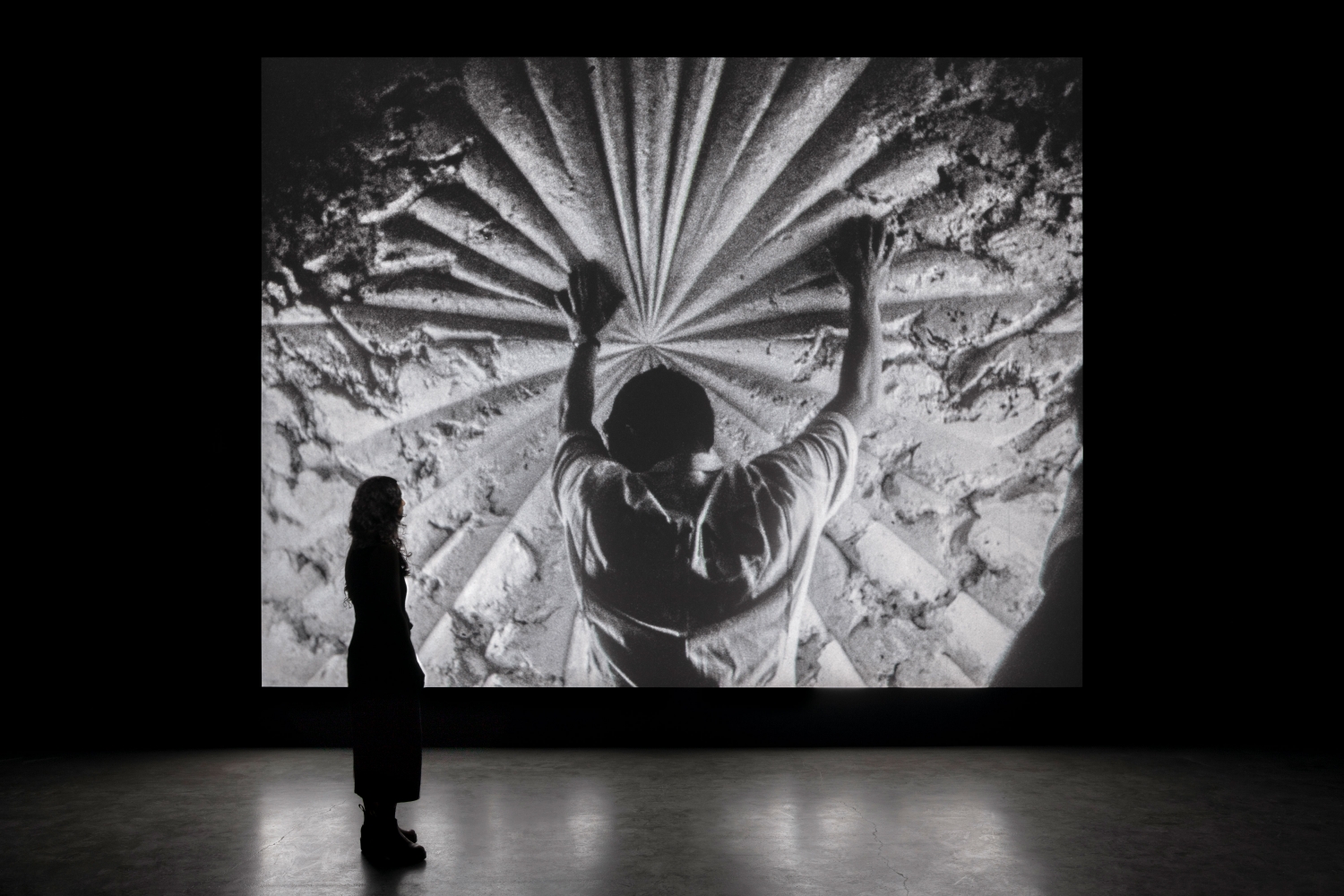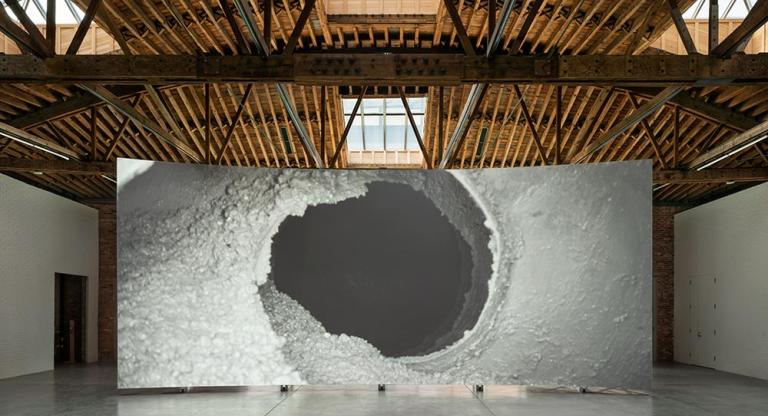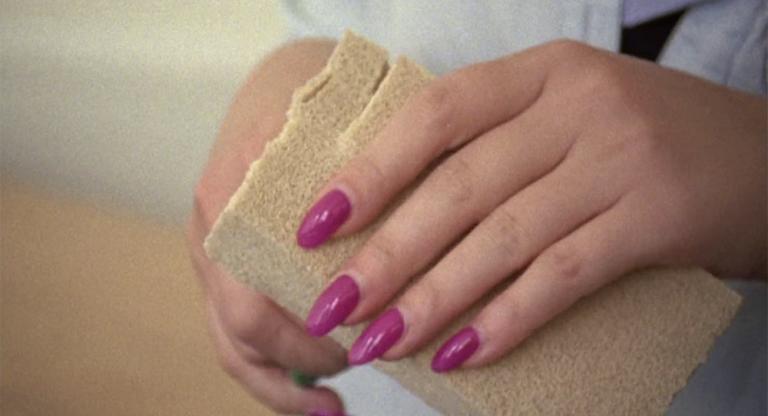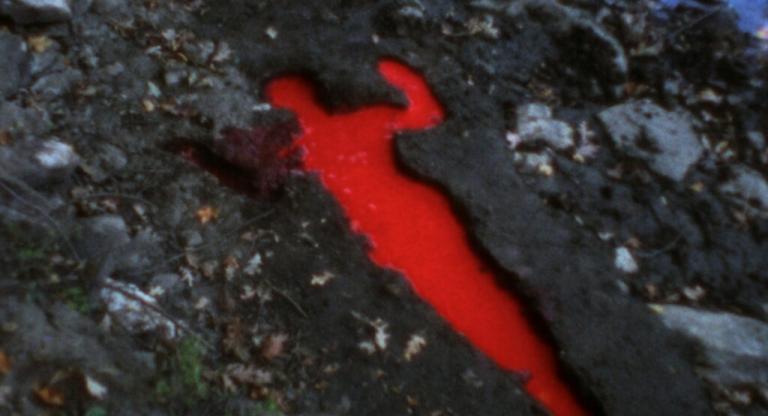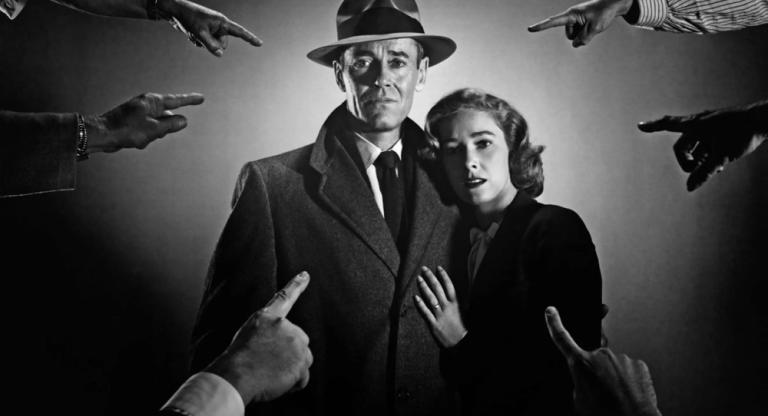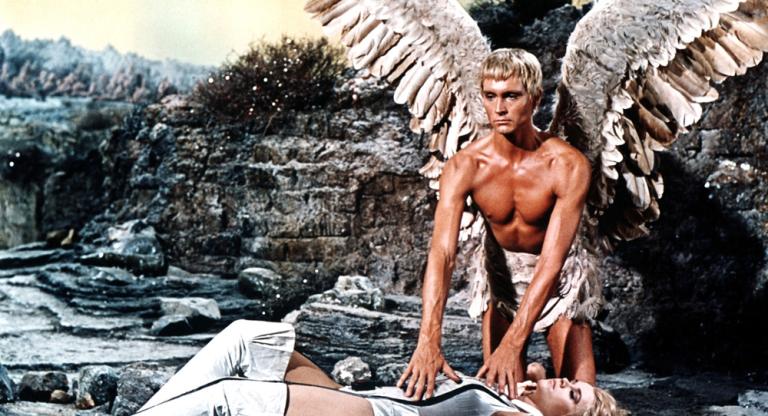According to Bruce Conner, Jay DeFeo called him “Telephone.” I can easily imagine the type of phone calls that would elicit a nickname at once so playful and so literal—the rollicking conversations that make way for generative sincerity, when secrets are passed through telephone wires as easily as the news of the day. The fervent dialogue between these two inimitable artists is considered in detail at Paula Cooper Gallery, where an exhibition of collages, photographs, drawings, and other mixed media presents individual works by each artist as part of an unconventional yet organic collaboration with the other.
At the exhibition’s core is THE WHITE ROSE (1967), a 16mm (blown up to 35mm) film by Conner that memorializes the removal of DeFeo’s monumental painting from her San Francisco studio. His record of this fateful event became a notable contribution to the work’s legacy, and is an example of the intertwining of one artist’s aesthetic with another.
DeFeo’s The Rose (1958–1966) is an arresting sight: several inches of densely layered oil paint protrude from its surface, where the artist carved meticulous ridges culminating at the painting’s center. She spent eight years toiling over its form, which she began in 1958, a year after she first met Conner. By 1965, following a prohibitive rent increase that forced her out of her studio, the painting was effectively unmovable; at almost eleven feet tall and weighing nearly one ton, it had to be professionally excised from the bay window alcove in which it was housed.
“Almost” and “nearly”—the scale of The Rose is most often conveyed in approximations, imbuing DeFeo’s opus with the incredible possibility that the painting is a living thing with the potential to grow over time. Conner films the work and its distinct environs with reverence, creating exalting images that lend to this aura. THE WHITE ROSE begins with a restless sequence exploring the studio’s dim interior. Conner captures its details—the ceiling’s cracking paint, a scattering of crusty paint cans, and dead Christmas trees gathered in the corner of the kitchen—before he moves his focus to the painting, illuminated by the bay window’s raking light. He pans the surface, homing in on its texture, and finds the paint-encrusted stool positioned before the still-unfinished work. “The room itself was the work,” he would later write about DeFeo’s studio during those years, “Walking into this room was like walking into a temple; it was almost alive.”
Conner chronicles The Rose’s final moments of site-specificity before a crew of movers strategize and execute its painstaking removal, then follows them as they maneuver and crate its massive form. Their only path out was the window, which they had to cut through to make a custom exit. The film’s mournful tone, scored by the opening track of Miles Davis’s Sketches of Spain (1960), finds moments of levity in the presence of DeFeo, who Conner films lying playfully on the packed artwork and sitting in the excavated window, feet dangling as she smokes cigarettes and watches the scene. The sadness seems to come from Conner as he watches her watch the painting disappear down Fillmore Street in the back of an open truck. She moves through the studio, newly lit by The Rose’s absence, and replaces the painting with one of her dead Christmas trees. She smiles as she dawdles, and Conner continues to watch.
DeFeo would finish the painting a few months later at the Pasadena Art Museum, where it was exhibited for the first time. Conner was a slow and intricate editor and spent the following two years creating an ode to DeFeo’s painting, to her temple. I can imagine him calling her the day he finished, letting her know the painting is still there.
—
THE WHITE ROSE is on view in the exhibition Bruce Conner & Jay DeFeo: (“we are not what we seem”) at Paula Cooper Gallery through tomorrow, Saturday, October 23.
Installation image of The White Rose courtesy of Paula Cooper Gallery
